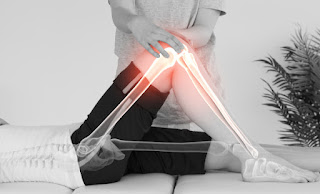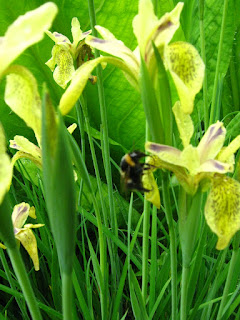Mindfulness Yoga of Thich Nhat Hanh
It's not just recently that I have known Thay (the word teacher that is often give to Thich Nhat Hanh). I have been following him for many, many years. Sometimes quite intensely. During the three years my husband and I lived in Edinburgh from 2001, we were part of an interbeing sangha (community) and would meet weekly and also periodically for retreats to do meditations based on his teachings.
I write this post as a dedication to Thay's life and how his legacy for interbeing lives on (a cloud never dies) in me and influences how I teach yoga.
What is so beautiful to me about Thich Nhat Hanh's teachings and how I can apply them to my yoga practice is firstly the incredible sense of presence that he invites us to, he does this by reminding us always to gently return to the breath.
Breathing in I know that I am breathing in. Breathing out I smile.
When I am on my yoga mat, when I come back to the breath, the posture immediately has a different quality. And this is not about finding a specific breathing pattern or trying to control my breath in any way. This is much more simple than that. It is just being aware of the present moment. The shape of the body, the shape of the breath and the awareness of it all. There is a sense of deep peace that arises. There is no striving to get into the 'correct' shape. There is no striving to have the 'correct' breathing pattern. The shape and breath of the pose is already there in the present moment awareness. And this is where true healing occurs.
Secondly, I love to invite my students, myself included to stand up and walk during practice. This walking can sometimes feel like an interuption. It is not. It is integral to staying present and by walking mindfully, we are allowing our walk to be everything we need. There is no destination, no place to get to, each step is home. I share below a poem from Thay that describes so beautifully the mindfulness yoga of walking.
...
We will enjoy our walk
without thinking of arriving anywhere.
Walk peacefully.
Walk happily.
Our walk is a peace walk.
Our walk is a happiness walk.
Then we learn
that there is no peace walk;
that peace is the walk;
that there is no happiness walk;
that happiness is the walk.
...
Each step brings a fresh breeze.
Each step makes a flower bloom under our feet.
Kiss the Earth with your feet.
Print on Earth your love and happiness.
Earth will be safe
when we feel in us enough safety.
©Thich Nhat Hanh 2005
Thirdly, I respect Thich Nhat Hanh as a great peace activist and a climate change advocate. Not for any political reasons, but simply because he saw the world as interconnected, and he felt that the reason why there is so much devastation on the planet at the moment is because we feel separate from the earth, from each other, we have lost our way, we have forgotten that we are all connected and we do not see that what hurts you, hurts me. As an antedote to modern life, Thich Nhat Hanh wanted us to learn about the community of interbeing.
This interbeing is similar for me to root of the word YOGA. Yoga means to 'yoke' or to connect. To be connected. To connect within ourselves, our body and mind, our heart and brain, our left and right, and beyond our physical selves, yoga is about the union of heaven and earth. Of my self to your self. That we are one. This is interbeing.
The universal truth that we are not separate, but interbeing, connected to each other is part of the deep understanding in yoga, and I understand that function so much more deeply because of listening to Thay's teachings.
And lastly, Thay was also deeply connected to the awareness of suffering. In his own life, witnessing the suffering of his people during the Vietnam War led him to make a statement that he would not choose sides. This position led him to be exiled from his homeland for nearly 40 years. Despite the suffering of his people, his own exile and the pain of others around him, he was able to acknowledge these things with an open heart.
We all suffer because of grief, anxiety, depression, illness, poverty, death or destruction, whether our suffering arrives because of war, famine, plagues or natural disasters, suffering is ultimately universal. No one can escape from it. This is a noble truth in the buddhist teachings.
Thay would teach us that we can go to great efforts to avoid our own suffering, we can take all sorts of unhealthy pathways, leading to addictions, distractions, avoidance, conflict. Ultimately these lead to more suffering. Avoidance of the suffering of others closes our hearts and we can ignore, numb out, or get angry about it without really facing and feeling what is happening.
And the simple solution is to open our hearts to that suffering.
I see that I practice yoga to meet my own body, and sometimes it is suffering. It can be in pain, sore, stiff. And so I have learnt to approach the body with understanding and kindness. I see yoga as a way to connect with myself, to meet those restrictions with love. With an open heart.
I have learnt how to open my heart to my own aches and pains. Bringing some gentle movements to my body, then I am more able to meet others, meet the world with that same attitude, that awareness of suffering, mine and yours, and an open heart to heal.
I give a deep bow of appreciation and love to Thay, and my respect for all the monastics in Plum Village and around the world who have dedicated their lives to continue his teachings. I hope that I can honour his life by applying what I know from him to my yoga practice and how I teach my students.
I have a short video "The morning walk for yoga" that gives a sense of how I teach mindful yoga. If you are interested in my Joint Renewal system which is the functional application of this mindfulness practice, you can sign up here www.kathywhiteyoga.com






Comments
Post a Comment